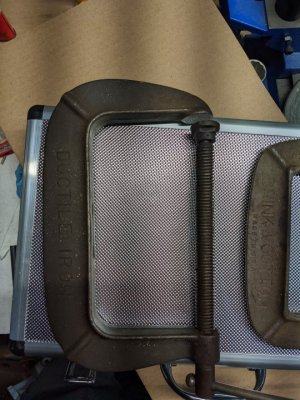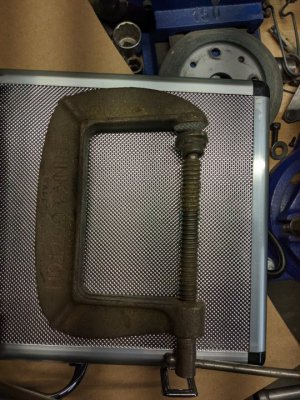- Joined
- Dec 18, 2019
- Messages
- 6,538
Seems I have managed to inherit a bunch of old c-clamps. Think they came from my maternal grandfather. I have four "Brink & Cotton" c-clamps that seem to have been sprung. They were either the Harbor Freight of their day, or they may have been abused past their limit. They seem to be marked as malleable or ductile iron. Is there anyway to fix these clamps, or should they be scrapped or repurposed? Have a bunch more clamps, most Brink & Cotton but some Cincinnati. Most are acme threaded but a few are 60 degree threads. Here are two of them. I could have sworn one had some cracks, but can't seem to find that one.


It's not like I need them, but, it would be good to fix them, or have them find new homes. Are they fixable? Or is that a fool's errand?


It's not like I need them, but, it would be good to fix them, or have them find new homes. Are they fixable? Or is that a fool's errand?


